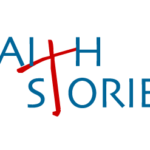Faith Stories: Impermanence Becomes Permanent


Without being too cryptic, all this means is that one can be in this place or that temporarily for so long that temporary becomes the norm. An impermanent state is something that most people experience at some point in their lives. We often don’t really explicitly leave home. We leave for school, and then after a couple of years realize that we don’t make it home as often as we used to, and maybe a couple years after that realize that the place where we feel most comfortable is no longer the “home” we left.
Such a realization is a good thing. What it really means is that you’ve found a new home, but the old labels stick. The result is a sense of being temporarily between home and some abstract future home, and church is often one of the elements caught in this transitory norm.
This is an illustration, then, of my mindset when I first arrived in Baton Rouge almost five years ago. It wasn’t that I didn’t have a church. I’d been a lifelong United Methodist, only my church was a two-hour drive from where I had lived for the previous six years. Credit to my wife Kristine, who when we were first dating wanted to find a church to attend on Sundays and invited me to join her search. Credit to sheer distance as well. It’s one thing to live 125 miles away from your “home” church, but when that number balloons to 1,000, you’re not fooling yourself any longer.
We found St. John’s, just down the road from other churches we had visited, liked what we found, and kept coming back. What drew me then as now is the way St. John’s emphasizes translating faith into action, and also constantly encourages careful discernment and reassessment of just how we as individuals are called to act. I have attended St. John’s just long enough to say with confidence that these characteristics go beyond the work of any single pastor. These characteristics are traits of St. John’s.
Bolstered by the call to action at St. John’s, I tentatively became more involved. I helped unload deliveries for The Shepherd’s Market and accepted an invitation to join the advisory committee for The Walk. Yet that transitory mindset stubbornly remained. I decided rather quickly that I would give exclusively of my time and my presence.
Deeper investments—financial investments—would have to wait for some uncertain time, at some uncertain church, in some uncertain town, after gaining some uncertain job.
This decision was in itself a valid one, formed through years of semester student fees and ramen noodle budgets. Besides, The Walk is a three-year campaign, and I will very likely have to move on in only two. I realized however, that it wasn’t a decision I had revisited for some time. Really, it was less a current decision and more a reflex born of the enduringly temporary status necessitated over the last decade by my career. Investing too deeply seems silly when you’re only in a place until you finish the bachelor’s, the master’s, the doctorate, that post-doc or visiting faculty position, that benefits-exempt non-tenured appointment; it seems silly until one realizes the thresholds are not getting any closer or better defined.
That realization was simple and at first blush had little to do with St. John’s. At both Kansas State and LSU—communities so temporary they virtually turn over every few years—I had voted for increased student fees to fund renovations to aged student recreation centers. I, along with my peers, signed up for the torn up parking lots, the closed off weight rooms and the bills for something I would never get to see. Yet the decision was an easy one, and I had even advocated it to skeptics, because a previous generation of students had done the same in the 1970s and 1980s. The parallel could not have been clearer. There it was, St. John’s reminder to reassess and be open-minded about the manner in which I was called to act.
That decision demonstrates St. John’s impressive capacity for action. Before moving to Baton Rouge, I felt called to give to my university and not a church because while I saw the positive impact of education every day, I had not seen similarly inspiring action in the church. That is not to say my previous churches did nothing, only that we all have limited resources and allocate them where they seem to have greatest impact.
The impact of St. John’s was clear, as well as the need in the community for more. For me, the reassessment was also indicative of the trust St. John’s has earned as we move ahead in growing our impact. I trust our church leaders when they say that every contribution is welcome, beneficial and important no matter how much or for how long.
The key is open-minded participation. I trust the legacy of our founders, that we have at hand a tremendous opportunity, and that I can contribute in a small way to that larger, lasting legacy. I trust I can invest for the better, no matter how long I actually get to sit in the pews on Sunday mornings.
Zach Isenhower
As presented during 11 a.m. worship on October 11, 2015

